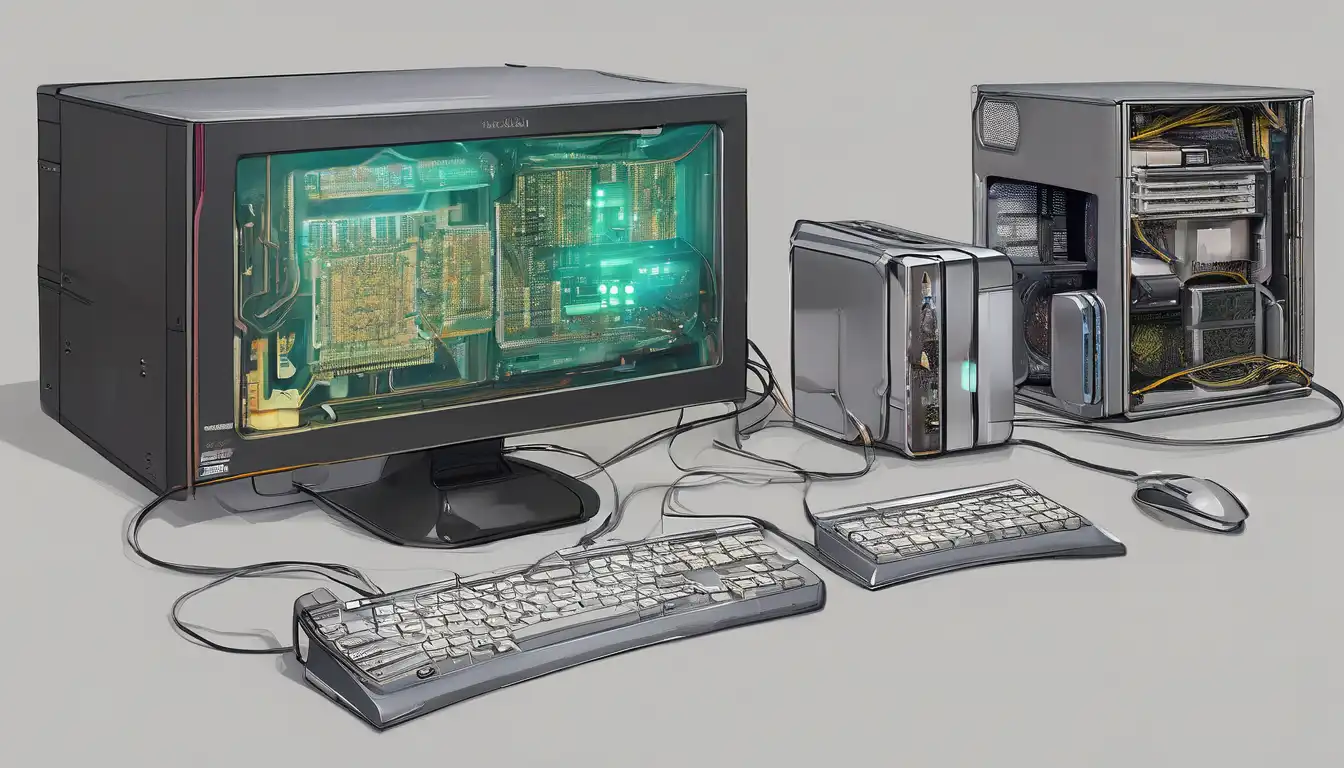Revolutionary Advances in Computer Hardware Technology
The landscape of computer hardware technology is undergoing unprecedented transformation, with innovations emerging at an accelerated pace. From quantum computing breakthroughs to AI-optimized processors, the latest developments are reshaping how we interact with technology and pushing the boundaries of computational power. These advancements are not just incremental improvements but represent fundamental shifts in hardware design and capabilities.
Next-Generation Processors and CPU Architecture
The processor market has witnessed remarkable evolution with chip manufacturers pushing beyond traditional limitations. Modern CPUs now feature advanced architectures that prioritize both performance and energy efficiency. The latest processors incorporate heterogeneous computing designs, combining high-performance cores with efficiency cores to optimize power consumption while maintaining peak performance when needed.
Manufacturers are implementing 3D stacking technology and chiplet designs that allow for greater component density and improved thermal management. These innovations enable processors to handle increasingly complex computational tasks while maintaining reasonable power requirements. The integration of AI acceleration directly into CPU architecture represents another significant leap forward, allowing for real-time machine learning applications without requiring separate hardware components.
Graphics Processing Unit (GPU) Evolution
GPU technology has advanced beyond gaming and graphics rendering to become essential for AI training, scientific computing, and data analysis. The latest GPUs feature ray tracing capabilities that create photorealistic lighting effects in real-time, while AI-powered upscaling technologies like DLSS and FSR provide significant performance boosts without sacrificing visual quality.
Modern graphics cards now incorporate dedicated AI processors and tensor cores specifically designed for machine learning workloads. This specialization allows for unprecedented computational efficiency in AI applications, making high-performance computing more accessible to researchers and developers. The memory bandwidth and capacity of contemporary GPUs have also seen substantial improvements, enabling them to handle massive datasets and complex simulations with ease.
Memory and Storage Innovations
The memory and storage sectors have experienced revolutionary changes with the widespread adoption of DDR5 memory and PCIe 5.0 interfaces. DDR5 memory offers significantly higher bandwidth and improved power efficiency compared to previous generations, while PCIe 5.0 doubles the data transfer rates of its predecessor, enabling faster communication between components.
Storage technology has progressed with the emergence of QLC NAND flash memory and computational storage drives that offload processing tasks from the CPU. These innovations provide higher storage densities and improved performance characteristics. The development of persistent memory technologies bridges the gap between traditional RAM and storage, offering non-volatile memory with speeds approaching that of conventional DRAM.
Quantum Computing Hardware Breakthroughs
Quantum computing represents the frontier of hardware innovation, with researchers making significant strides in qubit stability and error correction. Recent developments in superconducting qubits and trapped-ion technologies have increased coherence times and improved gate fidelities, bringing practical quantum computing closer to reality.
Major technology companies are investing heavily in quantum hardware development, with some systems now exceeding 100 qubits. While still in early stages, these advancements promise to revolutionize fields such as cryptography, drug discovery, and complex system optimization. The integration of classical and quantum computing systems is also progressing, creating hybrid architectures that leverage the strengths of both approaches.
Cooling and Thermal Management Solutions
As component power densities increase, innovative cooling solutions have become essential. Liquid cooling systems have evolved from exotic enthusiast options to mainstream solutions, with all-in-one coolers offering efficient thermal management for high-performance components. Advanced phase-change cooling and immersion cooling technologies are emerging for extreme performance applications.
Manufacturers are developing smarter thermal management systems that dynamically adjust cooling based on workload requirements. These intelligent systems optimize fan speeds and pump rates to balance performance, noise levels, and energy consumption. The integration of temperature sensors throughout components allows for precise thermal monitoring and proactive cooling adjustments.
Connectivity and Interface Standards
The latest hardware innovations include significant improvements in connectivity standards. USB4 and Thunderbolt 4 provide unified connectivity solutions with high-speed data transfer and power delivery capabilities. Wi-Fi 6E and upcoming Wi-Fi 7 standards offer improved wireless performance with reduced latency and increased bandwidth.
Ethernet technology has advanced with 2.5GbE and 5GbE becoming more common, providing affordable high-speed networking options. These connectivity improvements enable faster data transfer between devices and more reliable network performance, essential for modern computing applications and the growing Internet of Things ecosystem.
Specialized Hardware for AI and Machine Learning
The demand for AI acceleration has driven the development of specialized hardware including tensor processing units (TPUs), neural processing units (NPUs), and field-programmable gate arrays (FPGAs) optimized for machine learning workloads. These specialized components offer significantly better performance per watt for AI tasks compared to general-purpose processors.
Hardware manufacturers are designing systems specifically for edge computing applications, combining efficient processing with low power consumption. These developments enable AI capabilities in mobile devices, IoT equipment, and other resource-constrained environments, expanding the reach of artificial intelligence technology.
Future Trends and Emerging Technologies
Looking ahead, several emerging technologies promise to further transform computer hardware. Neuromorphic computing, which mimics the structure and function of biological neural networks, offers potential breakthroughs in energy efficiency and pattern recognition. Photonic computing, using light instead of electricity for data transmission, could revolutionize data center infrastructure and high-performance computing.
Advances in materials science, particularly with graphene and other two-dimensional materials, may enable new transistor designs and computing paradigms. The integration of hardware security features directly into processor architecture is also becoming increasingly important as cybersecurity threats evolve. These developments indicate that the pace of hardware innovation will continue to accelerate, driving computing capabilities to new heights.
The continuous evolution of computer hardware technology ensures that computing power will keep growing while becoming more accessible and energy-efficient. These innovations not only enhance existing applications but enable entirely new computing paradigms that will shape the technological landscape for years to come.
